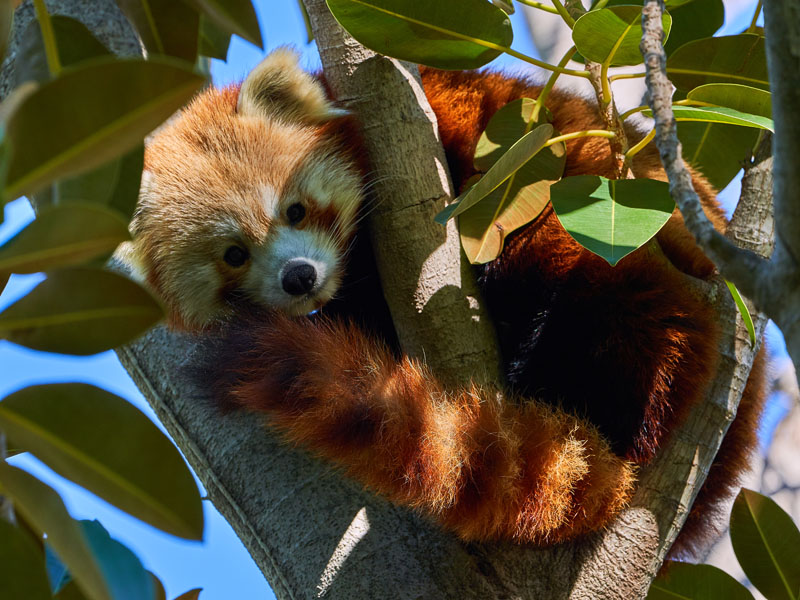











Red Panda




























































The red panda (Ailurus fulgens), a peculiar animal distinguished by its reddish-brown fur. It has been considered a relative of the giant panda and the raccoon, but has finally been classified as the only species of the genus Ailurus and the family Ailuridae. Unfortunately, it is in danger of extinction, and Selwo Aventura participates in the European Endangered Species Programme (EEP) for its conservation.
In its natural habitat, the red panda inhabits temperate climates in the mountains of Nepal and northern Burma, as well as parts of central China. There, it makes its home in deciduous and coniferous forests with an abundance of bamboo between 2,500 and 4,800 metres altitude.
It spends most of its time at the top of trees, where it is able to move with great agility because it uses its long tail to balance its movements. It clings to trunks and branches thanks to its partially retractable claws and is a good climber, descending from trees in a very curious way, doing so upside down. On the ground, it moves at a slow pace or with a faster hop or trot.
Although it feed mainly on bamboo, which makes up more than half of their diet, they also eat roots, fruits, fungi and lichen. In addition, as a carnivorous mammal, it complements its diet with eggs and small birds, insects or small rodents. The same bone in its wrist that helps it to cling tightly to tree branches allows it to feed easily.
The red panda is usually most active at night, dusk and dawn, when it goes out in search of food. It is a very sedentary animal when it is not searching for food, so it usually spends the day resting. It generally seeks the coolness of the leaves or takes shelter from the heat in the innermost branches of trees, where it sleeps with its arms outstretched, it loves it! If it does not sleep perched on the branches, it does so curled up in the hollows of the trees, using its long tail to cover its face to keep it in the dark.
The red panda is a shy and generally solitary animal, except during the mating season. This small carnivore is very quiet and not very noisy, although when it communicates with others of its species it does so by emitting small cries.
The red panda is declared endangered by the International Union for Conservation of Nature (IUCN), its main threat being the loss, fragmentation and deterioration of the habitat in which it is distributed as well as physical threats, all of them increased by the increase of populations in the area; climate change, which increases the number of natural catastrophes; and poaching for pets, skins and meat.
Selwo Aventura is part of the European Endangered Species Programme (EEP) for the conservation of the red panda, coordinated by the European Association of Zoos and Aquaria (EAZA). In June 2022, our red panda pair had its first offspring after the female Timbu, born in 2016 in Germany, and the male Mitsuke, born in 2020 in Belgium, joined together in Estepona with the aim of forming a breeding pair. The Global Species Management Plan (GSMP) for the red panda in zoos around the world is closely linked to in-situ conservation actions, with the aim of educating and raising awareness among visitors about the need to conserve this species; to support and contribute the experience in red panda breeding to conservation in its place of origin and to have a sustainable genetic reserve that can contribute specimens to genetic supplementation, demographic or reintroduction programmes.